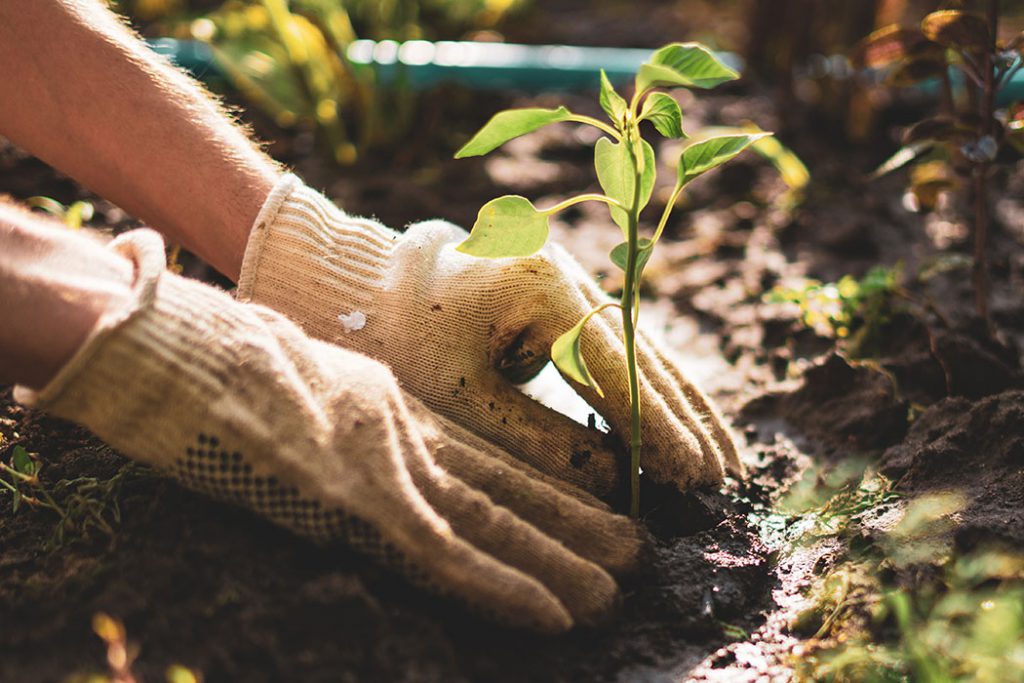Tips for increasing biodiversity in your yard

April is now among us and spring is in full swing; plants are powering forward and you can see your yard slowly turn from brown to green with flashes of colour from the newly emerging flowers and grasses. Ontario’s grain farmers are getting ready to start planting their grains, and many Ontarians are looking forward to getting outside and perhaps doing some gardening or yard work now that the weather is nice!
While you go about your yard work, do you think about the many different animals, insects and plants that grow in your yard? They are all around in your yard’s ecosystem and growing yard biodiversity is very important in helping to protect our environment.
Biodiversity is a huge topic of conversation with Ontario’s grain farmers. They work closely with many different ecosystems to successfully and sustainability grow Ontario grains. This article looks at ways you can increase biodiversity through some simple steps you can follow in your own yard.
What is biodiversity?
When we talk about biodiversity, we are talking about the various form of life that exist in a particular ecosystem and increased biodiversity means increased environmental health. Biodiversity in your own yard ranges from the trees and flowers to the ants and the birds and every single living thing in between. Kate Whiting of the World Economic Forum states “biodiversity provides us with everything we need to live clean air, clean water, it creates healthy fertile soil for growing crops and it pollinates crops.” Humans are currently the largest threat to biodiversity through habitat loss.
By following these tips to increase biodiversity in your yard, you can help increase environmental health as well as having a great reason for getting outside and enjoying some beautiful weather this April.
Increase Biodiversity Tip #1: Shrink the Lawn
While a nicely manicured lawn may look nice, they are considered a ‘dead-zone’ in our yards. You can easily increase biodiversity by shrinking the size of your lawn.
As Whiting describes, “neat lawns have very little benefit for biodiversity. They’re usually dominated by just a few types of grass species”. When flowers pop up in the middle of our nice-looking lawn, we are likely to pull them out because at that point they are considered a weed. Flowering plants provide lots of pollen and nectar for insects such as bees. Additionally, flowering plants provide shelter and habitat for lots of little insects.
By shrinking the size of your lawn and introducing a low maintenance ‘tapestry’ lawn, homeowners and gardeners can increase biodiversity and can decrease the amount of mowing that needs to be done.
Another step that can be taken to improve biodiversity includes shifting your mindset from seeing weeds as a nuisance to your manicured space to seeing them as part of the natural land that can help increase biodiversity. Not all weeds are beneficial and can be harmful to pets and humans (hi poison ivy!), so carefully research what “weeds” you have in your lawn, and whether they need to go or can remain for a great biodiversity.
Increase Biodiversity #2: Grow ‘Keystone’ Plants
Keystone plants refer to native plants that maximize their benefits to your yard’s ecosystem; this includes Ontario native plants such as oak trees, sugar maples, eastern hemlock and more!
Native insect species feed on native plants; by planting an increased number of native plants, you are feeding native insects that will increase the number of native insects there are because they have enough food to support a larger population. When there are more insects, there will also be a healthier population of animals that feed on those insects.
For example, caterpillars feed on oak trees, when there are more oak trees available for caterpillars to feed on, there is a healthier population of caterpillars! More caterpillars could then result in a healthier bird population because the birds will have more caterpillars to feed on.
Check out Landscape Ontario’s article on Landscaping with Native Plants for more information on which native species you should grow in your yard.
Increase Biodiversity Tip #3: Reduce Light Pollution
Nighttime light pollution is a large issue for many insects and is the leading cause of insect decline. Insects such as fireflies, glowworms and lightning bugs light up for survival purposes and artificial light can interfere with this natural behavior.
Additionally, too much light can affect a plant’s ability to turn sunlight into nutrients and can negatively affect their growth. Too much light is also bad news for animals like birds, bats, pollinators, moths, frogs, fish and turtles. Almost all living creatures in your yard are negatively impacted by artificial light at night.
One way that you can improve the biodiversity in your yard is by installing motion light sensors and using yellow LED bulbs can help to reduce light pollution. Another reason that should influence you to reduce light pollution in your yard is by being reminded that slugs are attracted to light, and by keeping your yard in the dark, you are limiting the almost of slimy creatures on your porch in the morning.
Increase Biodiversity Tip #4: Allow Caterpillars to Complete their Development
Many types of caterpillars complete their transformation in the soil or under a pile of dead leaves under trees. Once caterpillars have finished their development, they turn into butterflies that help to pollinate plants in your yard. Butterflies are the symbol that you have a healthy ecosystem in your yard because butterflies also bring birds, bats native bees to you yard. They provide food sources for these animals and are an important part of feeding all of the members of the ecosystem in your yard. By having more butterflies and caterpillars, you are increasing biodiversity in your yard.
Build beds or plant native ground cover under trees, to help the caterpillars find safe places to complete their transformation. And, by doing this you will see many beautiful butterflies flying around your yard come summertime!
Follow these 4 tips to help increase biodiversity in your yard; watch your yard flourish with many different types of plants and animals while also knowing you are helping the environment.



